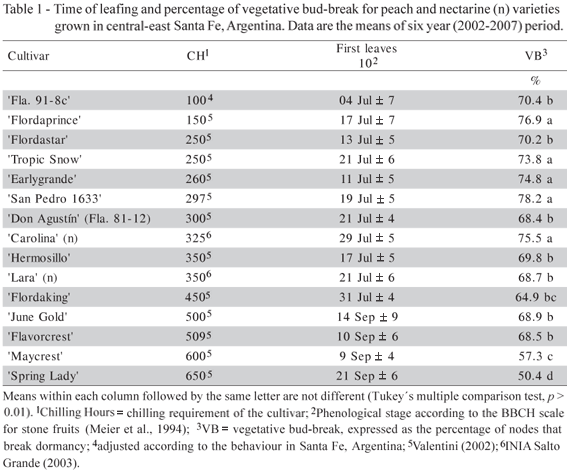In Santa Fe, the central-east area of Argentina, the expansion of fruit tree crops requires the introduction and evaluation of low chilling varieties. The aims of this study was to characterize the phenological behaviour and the reproductive traits of peach (Prunus persica L. Batsch) and nectarine varieties with chilling requirements ranging from 150 to 650 chilling hours (CH). Low chilling varieties (< 450 CH) had higher flower density (22.0-56.5 flowers m-1), fruit set (26.0-56.7%), fruit yield (9.3-36.6 kg per plant), and low coefficient of fruit yield variability than varieties with a higher chilling requirement (>500 CH). The phenology of high chilling requirement varieties had the advantage that blooming and fruit set happened after the period of late frost occurrence. However, they did not satisfy their chilling requirement, showing an inadequate vegetative and reproductive behaviour. Low chilling varieties began to sprout during July, and the period of full bloom occurred from July 14th to August 4th. Fruit harvest was initiated on October 19th with the cv. 'Flordastar' and it extended for 58 days. However, on low chilling varieties the harvest time was reduced in ten days. Flower density, fruit set and fruit yield showed a negative relationship with the chilling requirement of the variety.
BBCH scale; stone fruits; flower intensity; fruit yield; low chilling requirement






